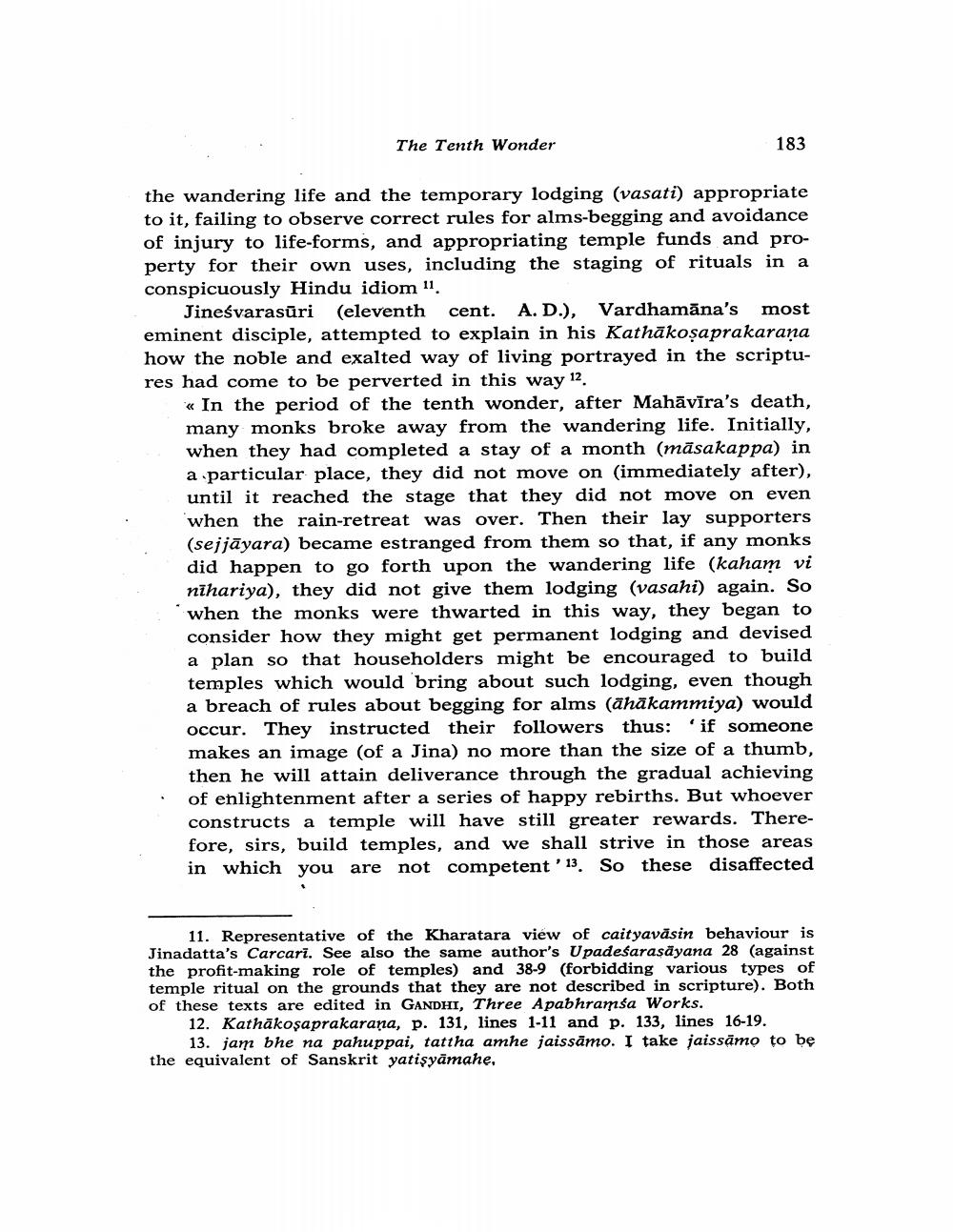________________
The Tenth Wonder
183
the wandering life and the temporary lodging (vasati) appropriate to it, failing to observe correct rules for alms-begging and avoidance of injury to life-forms, and appropriating temple funds and property for their own uses, including the staging of rituals in a conspicuously Hindu idiom 11
Jineśvarasūri (eleventh cent. A. D.), Vardhamāna's most eminent disciple, attempted to explain in his Kathākoșaprakarana how the noble and exalted way of living portrayed in the scriptures had come to be perverted in this way 12
« In the period of the tenth wonder, after Mahāvīra's death, many monks broke away from the wandering life. Initially, when they had completed a stay of a month (māsakappa) in a particular place, they did not move on (immediately after), until it reached the stage that they did not move on even when the rain-retreat was over. Then their lay supporters (sejjāyara) became estranged from them so that, if any monks did happen to go forth upon the wandering life (kaham vi nihariya), they did not give them lodging (vasahi) again. So when the monks were thwarted in this way, they began to consider how they might get permanent lodging and devised a plan so that householders might be encouraged to build temples which would bring about such lodging, even though a breach of rules about begging for alms (anākammiya) would occur. They instructed their followers thus: if someone makes an image (of a Jina) no more than the size of a thumb, then he will attain deliverance through the gradual achieving of enlightenment after a series of happy rebirths. But whoever constructs a temple will have still greater rewards. Therefore, sirs, build temples, and we shall strive in those areas in which you are not competent '13. So these disaffected
11. Representative of the Kharatara view of caityavāsin behaviour is Jinadatta's Carcari. See also the same author's Upadeśarasāyana 28 (against the profit-making role of temples) and 38-9 (forbidding various types of temple ritual on the grounds that they are not described in scripture). Both of these texts are edited in GANDHI, Three Apabhramśa Works.
12. Kathäkoşaprakarana, p. 131, lines 1-11 and p. 133, lines 16-19.
13. jam bhe na pahuppai, tattha amhe jaissämo. I take jaissāmo to be the equivalent of Sanskrit yatisyāmahe,




